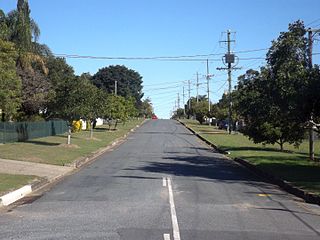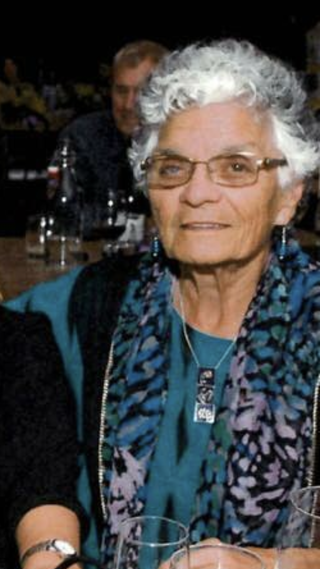Related Research Articles

Moreton Island (Mulgumpin) is an island on the eastern side of Moreton Bay on the coast of South East Queensland, Australia. The Coral Sea lies on the east coast of the island. Moreton Island lies 58 kilometres (36 mi) northeast of the Queensland capital, Brisbane. 98% of the island is contained within a national park and a popular destination for day trippers, four wheel driving, camping, recreational angling and whale watching and a 75-minute ferry ride from Brisbane. It is the third largest sand island in the world. Together with Fraser Island, Moreton Island forms the largest sand structure in the world. It was the traditional country of the Ngugi before settlement.

Stradbroke Island, also known as Minjerribah, was a large sand island that formed much of the eastern side of Moreton Bay near Brisbane, Queensland until the late 19th century. Today the island is split into two islands: North Stradbroke Island and South Stradbroke Island, separated by the Jumpinpin Channel.

North Stradbroke Island, colloquially Straddie or North Straddie, is an island that lies within Moreton Bay in the Australian state of Queensland, 30 kilometres (19 mi) southeast of the centre of Brisbane. Originally there was only one Stradbroke Island but in 1896 it split into North Stradbroke Island and South Stradbroke Island separated by the Jumpinpin Channel. The Quandamooka people are the traditional owners of North Stradbroke island.

Dunwich is a town and locality on the western side of North Stradbroke Island in Queensland, Australia. Dunwich is part of the Redland City local government area, administered from the bayside town of Cleveland on the Queensland mainland. In the 2021 census, the locality of Dunwich had a population of 737 people.

John Bede Polding, OSB was the first Roman Catholic Archbishop of Sydney, Australia.

St James College is an independent Catholic secondary day school for boys and girls, located in Brisbane, Queensland, Australia. St James College, informally known as Jimmies, was established in 1868 with only 12 students and is the oldest Catholic boys' school in Queensland. In 1893, the Congregation of Christian Brothers agreed to take over the school following major economic depression, the government's refusal to pay staff wages and inconsistent student enrolment. As of 2021, the co-educational school had an enrolment of approximately 520 students from Year 7 to Year 12. The school principal is Anne Rebgetz.

Brown Lake (Bummeria) is a perched lake on North Stradbroke Island, in South-East Queensland, Australia. The ecosystem is an example of a coastal non-floodplain sand lake and is characterised by acidic water, nutrient-poor and sandy soil, shrub-like vegetation and wet heathland.

One Mile is a suburb of Ipswich in the City of Ipswich, Queensland, Australia. In the 2016 census One Mile had a population of 2,077 people.
Jandai is an Australian Aboriginal language of the Quandamooka people who live around the Moreton Bay region of Queensland. Other names and spellings are Coobenpil; Djandai; Djendewal; Dsandai; Goenpul; Janday; Jendairwal; Jundai; Koenpel; Noogoon; Tchandi. Traditionally spoken by members of the Goenpul people, it has close affinities with Nunukul language and Gowar language. Today now only few members still speak it.

The Quandamooka people are Aboriginal Australians who live around Moreton Bay in Southeastern Queensland. They are composed of three distinct tribes, the Nunukul, the Goenpul and the Ngugi, and they live primarily on Moreton and North Stradbroke Islands, that form the eastern side of the bay. Many were pushed out of their lands when the English colonial government established a penal colony near there in 1824. Each group has its own language. A number of local food sources are utilised by the tribes.

Dunwich Cemetery is a heritage-listed cemetery at Bingle Road, Dunwich, North Stradbroke Island in the City of Redland, Queensland, Australia. It was built from 1847 to 1952. It is also known as One Mile Cemetery. It was added to the Queensland Heritage Register on 21 October 1992.

Deebing Creek Mission is a heritage-listed former Aboriginal reserve at South Deebing Creek Road, Deebing Heights, City of Ipswich, Queensland, Australia. It was built from c. 1887 to c. 1915. It is also known as Deebing Creek Aboriginal Home, Deebing Creek Aboriginal Mission, and Deebing Creek Aboriginal Reserve. It was added to the Queensland Heritage Register on 24 September 2004.
The Ngugi are an Aboriginal Australian people, one of three Quandamooka peoples, and the traditional inhabitants of Moreton Island.
The Nunukul, also spelt Noonuccal and known also as Moondjan are an Aboriginal Australian people, one of three Quandamooka peoples, who traditionally lived on Minjerribah, in Moreton Bay Area and in mainland Brisbane regions.
The Goenpul, also written Koenpal, are an Aboriginal Australian people, one of three Quandamooka peoples, who traditionally lived on the southern part of Stradbroke Island in southern Queensland. Today their preferred term for their group is Dandrubin Gorenpul.

Joan Patricia Hendriks (1936-2020), also known as Aunty Joan, is a Ngugi elder of one of the three groups of Quandamooka people in Moreton Island, Queensland, Australia. She is the first Indigenous person appointed to the National Catholic Education Commission, and has brought Indigenous issues to the forefront at the United Nations and International Interfaith Forums.
Megan Cope is an Australian Aboriginal artist from the Quandamooka people of Stradbroke Island/Minjerribah. She is known for her sculptural installations, video art and paintings, in which she explores themes such as identity and colonialism. Cope is a member of the contemporary Indigenous art collective ProppaNOW in Brisbane.
The Queensland Aboriginal Protection Association (QAPA) was responsible for the creation of various mission stations or Aboriginal reserves in Queensland, Australia, in the late nineteenth century.
Paul Tripcony (1901–1975) was an Indigenous Australian and a collector of rare books and Aboriginal stone artefacts from Minjerribah, also known as Stradbroke Island.
Robert Vincent Anderson is an Australian Aboriginal elder and former union official.
References
- ↑ Coghill, Shane (December 2011). The Secret Life of an Aborigine: Memoirs of Shane Coghill, Goenpul Man: Quandamooka Stories as Heritage (PDF) (Thesis). Griffith University. pp. 33–34. S2CID 165698276. Archived from the original (PDF) on 15 February 2020. Retrieved 27 February 2020.
Submitted in fulfilment of requirements for the degree of Master of Philosophy to the School of Humanities, Arts, Education and Law Group, December, 2010
- ↑ J. Franklin, Catholic missions to Aboriginal Australia: an evaluation of their overall effect Archived 1 December 2016 at the Wayback Machine , Journal of the Australian Catholic Historical Society 37 (1) (2016), 45-68; O. Thorpe, First Catholic Mission to the Australian Aborigines (Pellegrini, Sydney, 1950); R. Ganter, The Stradbroke Island Mission (1843-1847) Archived 20 February 2017 at the Wayback Machine .
- ↑ Walker, Faith (20 April 1998). "Useful and Profitable: History and race relations at the Myora Aboriginal Mission, Stradbroke Island, Australia, 1892-1940". Memoirs of the Queensland Museum, Cultural Heritage Series. 1 (1). Brisbane: 137–175. ISSN 1440-4788 . Retrieved 27 February 2020.
- 1 2 3 4 Anderson, Robert V. (2001). "History, Life And Times of Robert Anderson: Gheebelum, Ngugi, Mulgumpin". doczz.net. Uniikup Productions. Retrieved 27 February 2020.
Community and personal history of a Ngugi Elder of Mulgumpin in Quandamooka, South East Queensland, Australia.
- ↑ Presenter: Lucy Worsley, Partnership with: Open University, The Minjerribah Moorgumpin Elders-In-Council and North Stradbroke Island Museum on Minjerribah (17 January 2024). "Lady Killers with Lucy Worsley: 22. Marie Christensen - Murderous Matron". 22. Marie Christensen - Murderous Matron. Episode 2. 28 minutes in. BBC. BBC Radio 4.
- ↑ "CHARGE OF MANSLAUGHTER". The Brisbane Courier . Vol. LIII, no. 12, 079. Queensland, Australia. 30 September 1896. p. 3. Retrieved 19 June 2024– via National Library of Australia.
- ↑ "Gouglas, Sean; Weaver, John C --- "A Postcolonial Understanding of Law and Society: Exploring Criminal Trials in Colonial Queensland" [2003] AUJlLegHist 14; (2003) 7(2) Australian Journal of Legal History 231" . Retrieved 19 June 2024– via Australasian Legal Information Institute (AustLII).